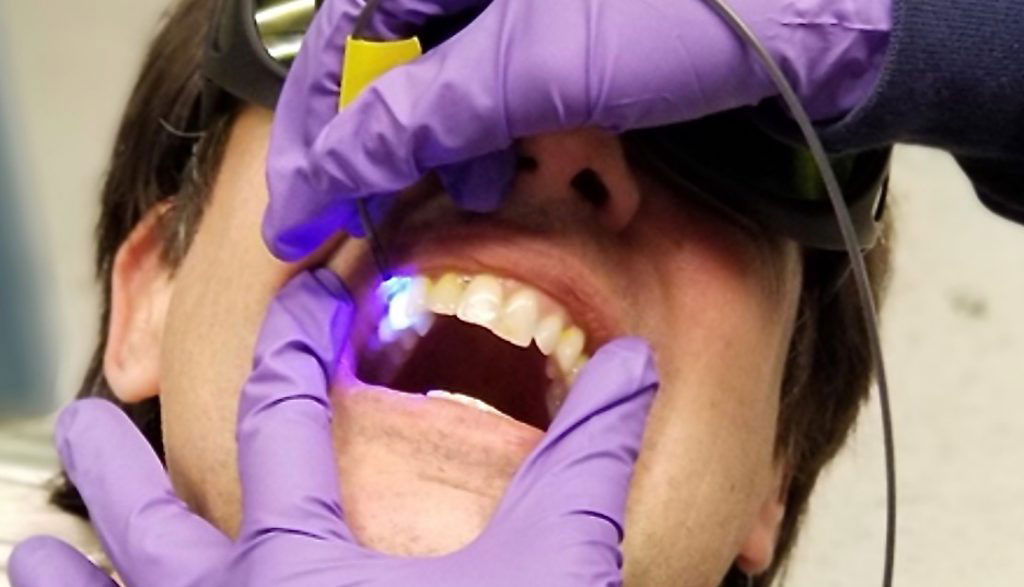In a new study, School of Dentistry and other University of Washington researchers have developed a tool that can measure acidity levels of plaque on teeth, which can predict dental caries, or tooth decay.

The UW device, called an O-pH system, is a prototype that emits LED light which, when used on an FDA-approved chemical dye that patients apply to their teeth, measures the pH levels built up by bacteria in their plaque.
“What our system does is detect the pH of the tooth’s surfaces in order to predict when, or how, bacterial processes will take over,” said Dr. Alireza Sadr, a School of Dentistry faculty member and study-co-author, “and to also determine the risk of each surface of developing caries.”
“Plaque has a lot of bacteria that produce acid when they interact with the sugar in our food,” said Manuja Sharma, a doctoral student from the UW Department of Electrical and Computer Engineering and lead author of the study, in a UW News release. “This acid is what causes corrosion of the tooth surface and eventually cavities. So, if we can capture information about the acidic activity, we can get an idea of how bacteria are growing in the dental biofilm or plaque.”
In early testing, the research team recruited 30 patients between the ages of 10 and 18, with a median age of 15, in the UW School of Dentistry’s Center for Pediatric Dentistry, since the enamel on children’s teeth is more susceptible to acid erosion.
The idea for the technology behind the device came from Dr. Eric Seibel, senior author and research professor of mechanical engineering in the UW College of Engineering, who initially worked on the project with former UW dental dean Dr. Joel Berg.
According to Dr. Sadr, the future applications of the O-pH device could reduce the need for dental X-rays. “Instead of going to the dentist and getting X-rays annually, you could go to the dentist and get an Oral-pH scan, and it’s almost more meaningful,” said Dr. Sadr. “Our goal is to limit the amount of X-ray exposure to the patient, and I think this technology will help with that.”
The current version of the O-pH device can assess roughly the surface area of one tooth at a time. A potential next step would be to utilize a high-speed camera to capture multiple surfaces in less time for a reading of all of a patient’s teeth in under a minute.
According to Dr. Sadr, the research team is working with other School of Dentistry and UW departments to prepare for clinical testing of this new video-based O-pH instrument.
Other co-authors of the study from the School of Dentistry include David Park, Se An, Micah Bovenkamp, Jess Cayetano, Ian Berude, and Zheng Xu, along with Lauren Lee from the UW Department of Microbiology, and Matthew Carson from the UW Human Photonics Laboratory. This research was funded by the National Science Foundation, award IIP-1631146 “Oral Health Monitor – optical quantification of bacterial load, therapy monitoring, and caries prediction.” Support also came from the Institute of Translational Health Sciences and the National Center for Advancing Translational Sciences of the National Institutes of Health.